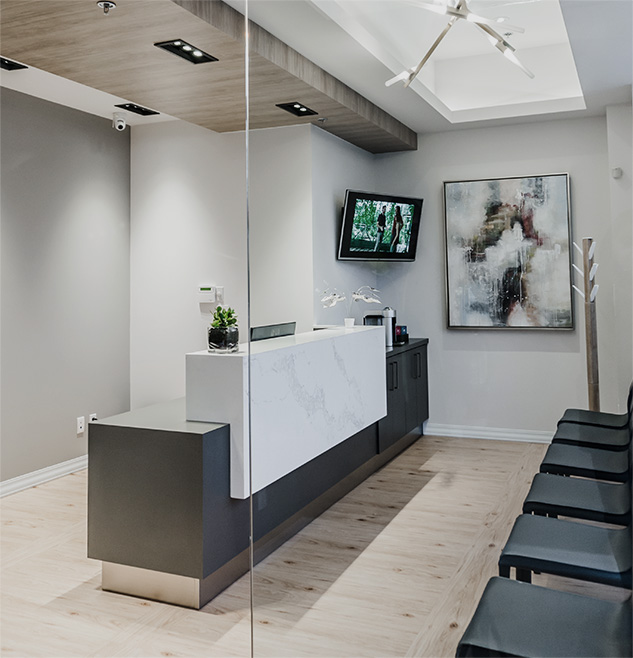A typical dental concern faced by patients is tooth wear, and it plagues a large segment of the population. Researchers continue to analyze incoming data to determine what causes tooth wear and how to effectively treat it.
If concerned, patients are asked to speak with a dental professional for more information about their symptoms and how to treat them.
Here’s more on tooth wear.
What Is Tooth Wear?
The term “tooth wear” refers to any form of tooth loss involving erosion, abrasion, abfraction or attrition.
Based on recent studies, 97% of the population has dealt with tooth wear. In general, this term is reserved for any loss of tooth substance beyond dental trauma. For example, a chipped tooth due to a punch doesn’t fit into this category.
The cause of one’s tooth wear is determined after a detailed examination. A certified dentist uses a set of diagnostic practices to inspect the tooth before establishing an underlying cause.
Symptoms of Tooth Wear
- Shortened Teeth
- Jagged Teeth
- Unnaturally Smooth Teeth
- General Tooth Pain or Sensitivity
- Yellowing of Teeth
- Cracked Teeth
- Chipped Teeth
- Problematic Crowns/Fillings
Types of Tooth Wear
1) Abrasion
This refers to the development of “notches” or V-shaped gaps in the cervical regions of one’s tooth. In most cases, these are aesthetically noticeable and continue to wear down over time.
Abrasion is provoked due to the use of an abrasive toothpaste, improper brushing technique, or hard toothbrush. With consistent implementation, these create notches in one’s teeth as the cementum/dentine wears out.
Additional Causes Include:
- Thread Biting
- Use of Toothpicks
- Pipe-Smoking
- Improper Use of Dental Floss
- Rigorous Use of Hair-Grips (i.e., Hairdressers)
In such cases, it’s recommended to cease these bad habits and make appropriate changes.
If left untouched, the tooth wear will progress and lead to aggressive notches in one’s teeth.
2) Attrition
This refers to any form of tooth-to-tooth contact as the surfaces crash together and damage each other. Continuous attrition causes lesions on one’s teeth and progressive damage.
Examples of attrition include cases of clenching or bruxism.
Additional Causes Include:
- Harsh Diet
- Use of Porcelain (Crashing Against Natural Teeth)
- Natural Dental Defects
A dentist will monitor one’s teeth to determine if attrition is causing damage or tooth wear.
Attrition can come in various forms whether it’s near the incisal edges or somewhere else.
3) Abfraction
This refers to the development of lesions (wedge-shaped) due to ongoing flexion of one’s teeth.
These lesions are also called, “stress-induced cervical lesions,” and can be provoked or instigated by unremitting compression. As the teeth continue to compress, this exposes one’s enamel leading to fracturing.
As the tooth ages, it wears down and loses elasticity leading to severe abfraction.
Symptoms of Abfraction Include:
- Bruxism
- Lesion(s) in One Tooth
- Lesion(s) in Subgingival Regions
- Ongoing Tensile Stresses
4) Erosion
This refers to the presence of acids (intrinsic or extrinsic) leading to continuous damage. Upon further examination, most patients with erosion develop a change in salivary flow.
Causes Include:
- Consumption of Acidic Foods
- Gastro-Esophageal Reflux
- Reduced Salivary Flow
- Bruxism
- Regurgitation
- Dietary Changes
To determine the cause of one’s erosion, a dentist will seek additional information related to one’s lifestyle, dental history, and more.
Prevention
Before establishing a tailor-made treatment, the dentist requires information about the patient’s dental condition(s). This information is used to understand the patient’s concerns, tooth wear, and more. To prevent damage, the dentist will establish a plan for rehabilitation using appropriate maintenance strategies including oral hygiene changes.
Appropriate treatment plans encompass the elimination of underlying factors.
Please note, tooth wear may be described as being biological, esthetic, or functional depending on the patient’s age, history, and more. The type of tooth wear determines which treatment is applied and how it manages to treat the tooth wear. This includes where the tooth wear is situated (anterior, posterior, generalized).
Treatment
Based on the dentist’s examination, a robust treatment plan is crafted to meet the patient’s needs.
For example, patients with noticeable erosion may seek assistance for their upper anterior teeth.
The treatment may include fixing/removing anterior bite planes, occlusal adjustments, ongoing tooth preparation, or the use of supra-occluding appliances. It’s also important to note these treatments are built on the patient’s assessment of his/her teeth. A patient happy with the appearance of their teeth may see the use of preventative dentistry while cosmetic changes may be necessary for unhappy patients. These cosmetic changes may include the use of prostheses, tooth reduction, or a combination of both.
In general, tooth wear is often difficult to eliminate but can be prevented and/or reduced using appropriate treatment options. A dentist with years of expertise can help personalize the treatment plan and guarantee change over time. It’s essential to recognize progressive tooth wear may continue, and patients are asked to schedule examinations for ongoing corrective work. Speak with your dental professional for more information regarding this.







13 thoughts on “Everything to Know About Tooth Wear”
Comments are closed.